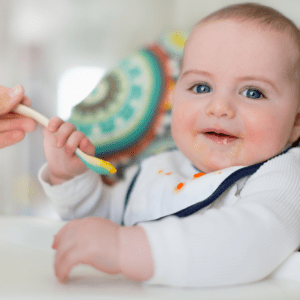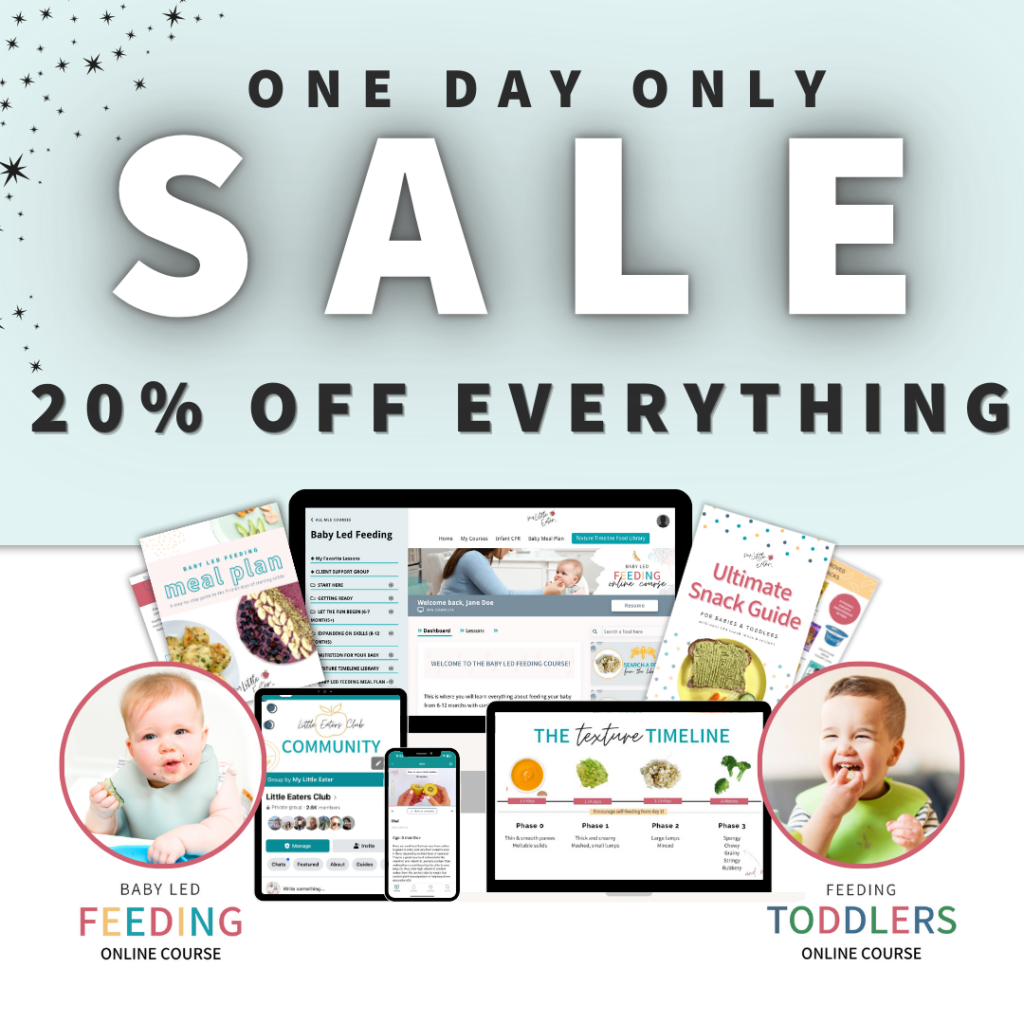
Podcast: Play in new window | Download (Duration: 16:29 — 13.2MB)
Subscribe: RSS
In this episode of the My Little Eater Podcast, I teach you how to spoon feed purees to your 6 month old baby – the baby led feeding way! This may seem intuitive to you, and not like something you need to be taught at all…BUT there are some tricks to doing this in a responsive way that respects your baby’s internal hunger cues, and allows for proper oral motor skill development.
You see, many of us spoon feed purees the same way that we’ve seen on television, or how other parents around us have done so. And often this might include games to distract the baby into accepting the spoon, such as… “Open up for the airplane! VROOOOMMM!”. Or, we may put the spoon in their mouth and automatically swipe up, and then clean their chin off with the spoon. These are examples of some really common things that parents do, but are they actually helpful for your baby who’s just learning about starting solids? Unfortunately, not really. That’s why I’m going over the steps that I’d like to see you take when spoon feeding your baby. Following these steps will assist with their development, food exploration, and will encourage them to self-feed sooner rather than later (which is the ultimate goal!).
If you find this information helpful, please leave a rating and review at Apple Podcasts (and don’t forget to subscribe so you never miss an episode!). And please share this episode with another parent about to start solids with their baby – puree feeding is a great way to begin and these tips will get them started on the right foot!
Additional Resources:
For all the information you could ever need to start solids with your baby, check out my Baby Led Feeding online course. This will show you how to feed your baby from 6 to 12 months in a way that will set them up for a lifetime of healthy eating, and can actually help prevent picky eating!
MORE ON BABY LED FEEDING: https://mylittleeater.com/babyledfeeding/
Skip To…
The Baby Led Feeding Method (2:21)
The 4 steps of spoon feeding (3:52)
Other tips to consider when spoon feeding (9:58)
How long should spoon feeding purees last? (14:04)
 1 day only sale! 20% off with code FLASH20 at checkout
1 day only sale! 20% off with code FLASH20 at checkout 





